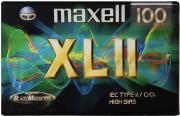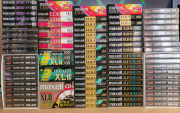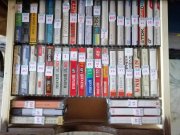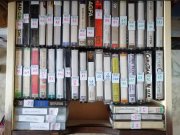If I understand correctly, type I cassettes requires the least bias. Then why set external bias pots in the middle? That way there is a limited amount of positive bias to add and it can be insufficient for biasing some type II and type IV tapes
I guess I need to be more clear...
the actual bias value you have while setting your bias knob depends also on the tape type the deck is set to.
example... I insert a type1 tape and the deck shows "normal" on the display... then a few things are automatically set to normal mode... i.e. PB EQ set to 120us , bias set to normal range, REC gain is set for normal tapes range and REC EQ filters for normal tapes are enabled.
And the actual bias values will range from min to max but still within the normal bias range.
example n2... I insert a type2 tape and the deck shows "chrome" on the display... then, automatically, PB EQ is set to 70us , bias is set to chrome range, REC gain is set to chrome tapes range and REC EQ filters for chrome tapes are enabled.
example n3... I insert a type4 tape and the deck shows "metal" on the display... then, automatically, PB EQ is set to 70us , bias is set to metal range, REC gain is set to metal tapes range and REC EQ filters for metal tapes are enabled.
Then... your "center" (or 12 o'clock) fine bias setting (but bias settings in general) does change automatically together with the tape type... so, your center knob bias value when you insert a type1 tape is different than the center knob bias value when you insert a type2 tape and it's different than the center knob bias value when you insert a type4 tape.
So... my previous point was that, since most type1 tapes (or all of them if you exclude the very old ones) work within a relatively narrow range on your fine bias knob (when the deck has detected a normal tape) , it's not really needed that you try to center the range on the knob because it won't happen that you set the knob to the minimum or to the maximum and you aren't still OK to correctly bias a ferric tape.
But, since both type2 and type4 tapes might happen to need some very different (fine) bias settings, it might happen that if you don't set things properly you might not be able to properly bias certain "extreme" models.
Anyways, I meant the black magnetite XLII-S , not the more basic XLII.... the XLII-S might need some more bias than the XLII.
PS: I am not a great fan of TDK and especially of their later budget models... i.e. , the shells of the later CDing2 (and which were used on more of their later models) are really bad... very cheaply made and lacking the needed consistence and precision... i.e. I own a few late version CDing2 where the guide rollers at the lower corners of the shell aren't well centered then they turn wobbly. On some other of those shells, the two halves of the shell don't match precisely! So, be careful with such later cheap TDK models.






